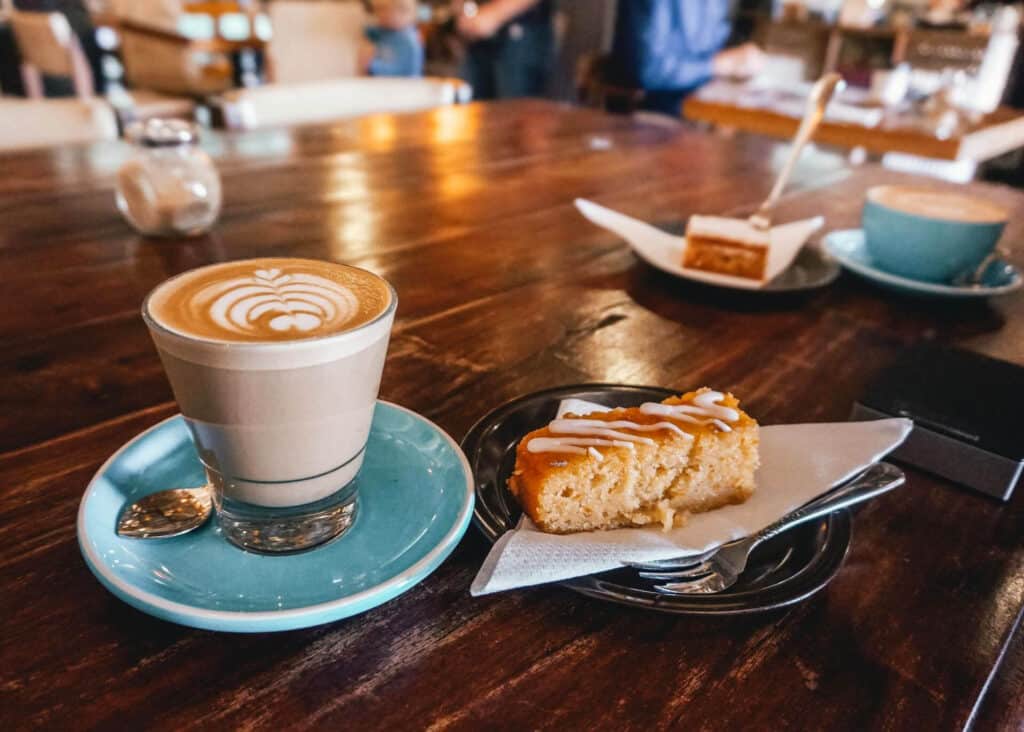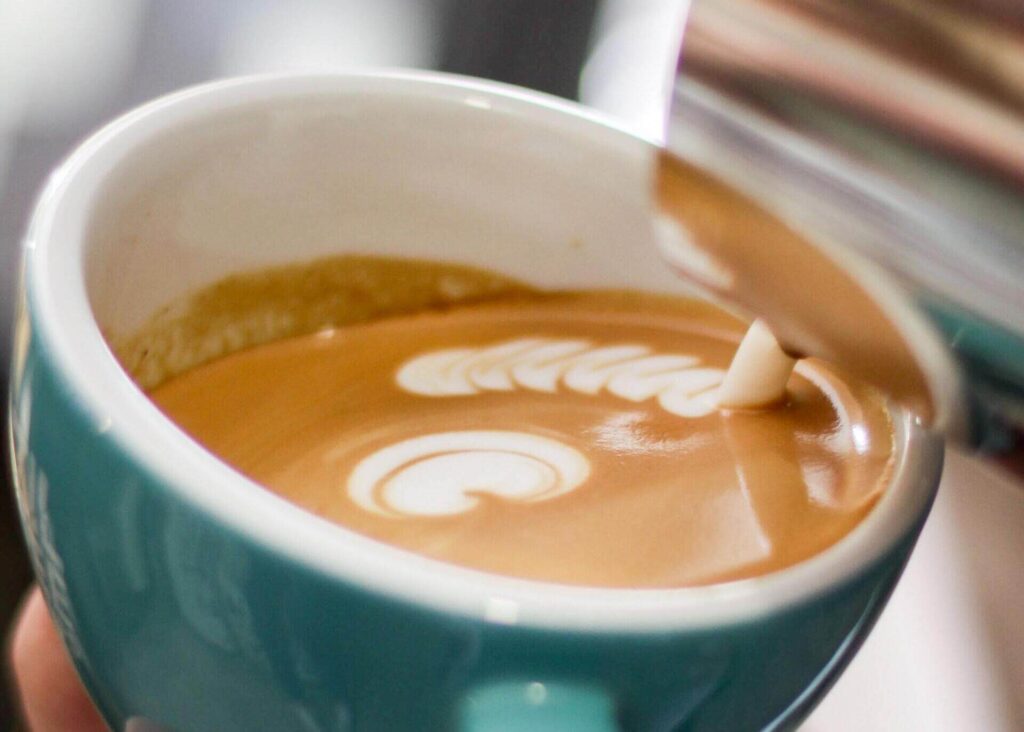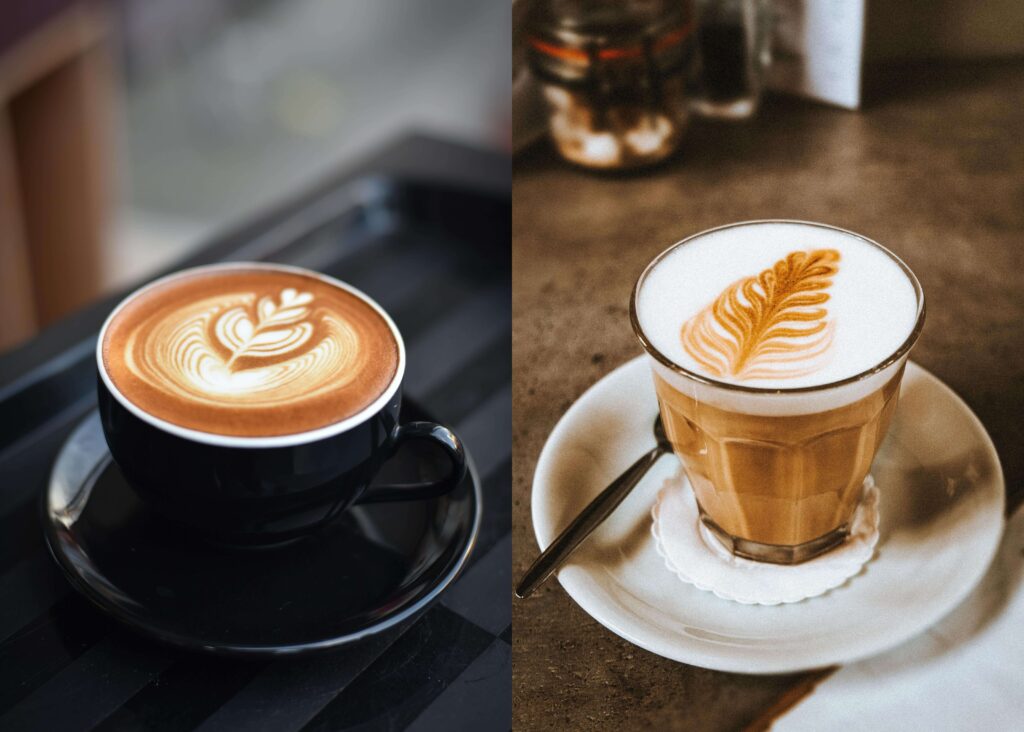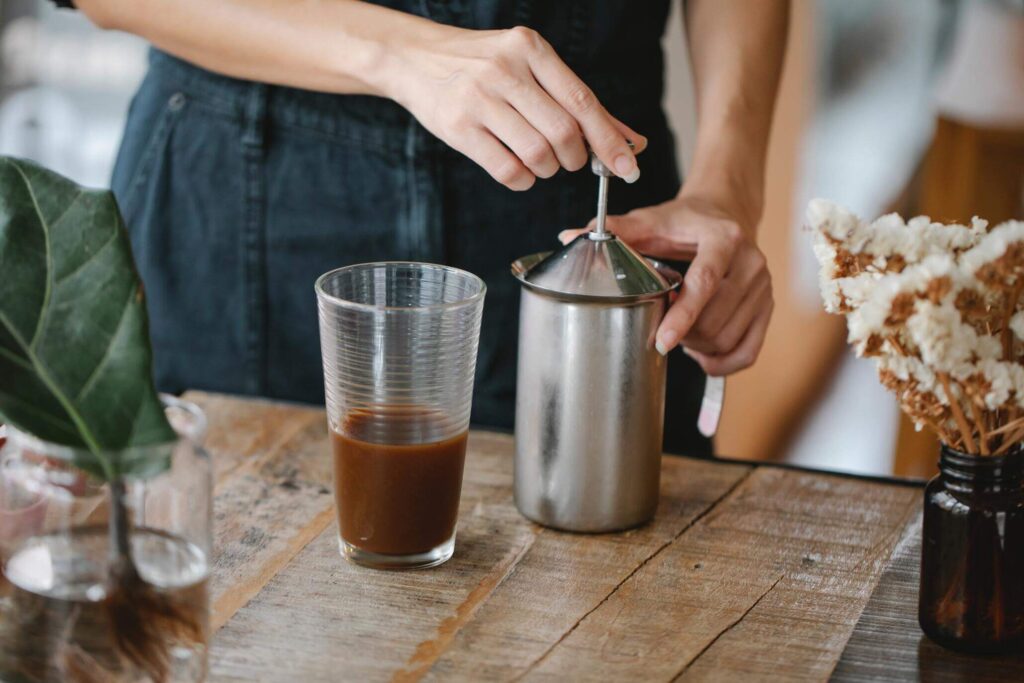If you are not a seasoned coffee drinker, the menu at a coffee shop can be intimidating. When you don’t know those coffee drinks, you might be tempted to order black coffee without embarrassing yourself in front of the barista. For example, you might wonder the difference between a flat white and a latte.
However, baristas usually appreciate the opportunity to share their knowledge and help you learn to appreciate coffee. Lattes and flat whites are two typical attractions on coffee shop menus. Both combine milk and espresso, but knowing the subtle differences between these coffee drinks can be a great way to determine your preference.
What is a latte?
A latte is sometimes called a caffé latte based on its Italian origin. It is one of the most well-known coffee drinks, easily found in almost any coffee shop worldwide.
However, be careful to distinguish a latte from a café au lait prepared with drip coffee. Café au lait is weaker as it is not made with espressos, like lattes and flat whites.
A latte is made with espresso and steamed milk and topped with a layer of foam. It can be served hot or iced in a tall glass, depending on your preference. Latte’s milk-to-coffee ratio is at least two-thirds steamed milk to one-third espresso. Of course, a large latte can have even more milk than that — as much as needed to fill the glass — so perhaps size matters in determining your latte is strength unless you specifically ask for an extra espresso shot.
The frothiness of the foam in a latte is a matter of taste. Some people like their lattes smooth, while others want that rich head on top. Despite the individual variations, the latte has more foam than a flat white and less foam than a traditional Italian cappuccino.
Lattes have enough foam for a free pour latte art, the cute little swirly design on top of your cup of coffee. Skilled baristas pour latte art with hot frothed milk in layers, using a stick or spoon to swirl the microfoam and join lines together. Common designs include hearts and flowers, but your barista’s creativity limits the possibilities for latte art.

What is a flat white?
A flat white espresso-based drink originated at coffee shops in Australia and New Zealand. With some help from Starbucks, it has become more widely known worldwide.
A flat white might be mistaken for a small latte, but it’s not the same drink. Flat whites are made with espresso rather than drip coffee like lattes and cappuccinos. A traditional flat white has two espresso shots, while lattes more commonly have just one unless you specifically ask for a double espresso.
The coffee-to-milk ratio is the most apparent difference between a flat white and a latte. Like a latte, a flat white is topped with steamed milk, but the flat white is darker and richer in color than a latte because less milk is used. The ratio is two-thirds milk to one-third espresso at most. A flat white is served in a small mug of about six ounces (180 milliliters) with less liquid overall.
A flat white is traditionally made with a double espresso shot and very little milk, so the taste is much stronger and bolder than most lattes. The Starbucks version of the flat white even uses ristretto shots, which are more concentrated than regular espresso shots.
The top of a flat white is flat rather than foamy — hence the name flat white. Instead of separating the milk and foam, the milk and microfoam are swirled together before adding to the espresso. It allows a thin layer of crema to rise to the top.

Flat white vs. latte: which is better?
Some people think lattes are just milky coffee, so a latte is ideal if you love hot milk. A latte uses whole or 2% milk, and there’s usually a noticeable separation between milk and foam. While your local barista may be willing to use a non-dairy substitute like soy, almond or oat milk if you ask, the results might not be as good.
On the other hand, a flat white requires semi-skimmed (1%) milk that’s heated and frothed but then swirled to a velvety texture to remove big bubbles. The resulting drink has a smooth mouthfeel and creamy texture but only a very thin layer of microfoam.
If you’re not a big fan of dairy, you might be better off with a flat white than a latte. However, substituting non-dairy milk can be better as you need only a little foam for a flat white.
If your concern is avoiding dairy, aside from the flat white vs. latte question, you might also want to consider an Americano with no milk. A macchiato, as traditionally conceived — in its Italian origin, the name means “marked” because it’s just supposed to be marked with a dot of steamed milk — also has less milk than a flat white. However, Starbucks has interpreted the macchiato in a different direction.
Size is another big difference in the flat white vs. latte debate. A typical latte will have 12 ounces (360 milliliters) or more of total liquid, while a standard flat white will have 6 to 8 ounces (180 to 240 milliliters). But, of course, the exact size of each drink varies based on your barista and how much foaming they do before serving it.
If you want to spend more time lingering in the cafe, you might prefer a large, milky latte to give you more to drink. Like its smaller sibling cortado, a latte is typically served in a glass.
However, you can consume a flat white more quickly if you’re in a hurry, as flat whites are served in smaller cups. A cappuccino is another option for a drink served in a small cup.
A flat white might have more caffeine and a pungent taste than a latte, as it often has more espresso. However, if what you want is closer to warm milk or you’re watching your caffeine intake, get a latte.
Finally, if you like sweetness or flavored syrups in your coffee, a latte is probably the best way to enjoy coffee. Generally, these optional ingredients are more commonly found in lattes than in flat whites.
So which one is better: a flat white or a latte? It’s up to individual preference. These two drinks are both good-quality coffee beverages with essentially the same ingredients. Either can be enjoyed hot or cold.

How is milk steamed and frothed?
Many espresso coffee makers have a steaming wand, an attachment for steaming and foaming milk. It heats the milk with steam and forces air through it to create tiny air bubbles that make the milk foam and give it a velvety texture. While lattes and flat whites require a lot of steamed milk, they’re prepared differently, giving them a unique flavor.
You can adjust the intensity of the velvety microfoam based on how deeply the steaming wand is inserted into the cold milk. For foamed milk, the steam wand goes in about an inch, while the wand stays closer to the surface of the milk for steamed milk.
How to make espresso drinks at home
Making your favorite espresso-based drink at home is easier than you might think. You have to find a way to get steamed milk and an espresso shot for either a latte or a flat white.
How to make espresso at home
A proper espresso machine certainly helps produce strong coffee at home much easier. However, professional espresso machines are expensive, so you may look for an affordable alternative for your homemade drink.
A Moka Pot or AeroPress won’t reach the full pressure of an espresso machine. Still, it will produce concentrated coffee similar to an espresso once you add the different layers of milk and foam. If you use this coffee brewing method, it should be an essential part of your preparation to grind fresh coffee beans right before you prepare your beverage.
Alternatively, handheld espresso makers can do a decent job and provide a nice shot of concentrated coffee that will serve as a decent base for your latte or flat white.
However, if you dream of proper thick espresso but buying an automatic espresso machine does not sound appealing, lever espresso machines might be a good option.
How to steam milk at home
If you don’t have an espresso machine with a steam wand but want to make a delicious flat white or latte at home, here are a few alternative methods for steaming and frothing the milk to create foam.
- The stovetop method: Pour some milk into a small saucepan, and heat it until you see small bubbles around the edges of the pan. Then, remove the pan from the burner and whisk the milk until it gets frothy. This method is primarily used if you don’t have an espresso machine or yours doesn’t have a frother.
- The blender method: Heat the milk on the stovetop or microwave until it’s bubbly. Then, pour it into your blender and whip until frothy.
- The milk frother method: A milk frother is a small hand-held machine that whips air into the milk, making it smooth and fluffy. It also heats the milk to the correct temperature, combining the steaming and frothing processes. You’ll pour the milk into a cup, lower the end of the frother into the cup, and press the start button. It is an effortless way to have the gourmet coffee house experience at home anytime.
How to make flat white at home
Making a perfect flat white at home is possible with practice. Some baristas find the milk pouring technique in flat whites easier than in lattes.
- Make a double espresso using freshly ground coffee and an espresso machine — or brew roughly the same amount of espresso-like coffee using an AeroPress or Moka Pot. If you want your flat white to be concentrated, you can pull ristretto shots using half the usual amount of water.
- Heat and froth milk, but before pouring it into your espresso drink, swirl the milk inside the pitcher so it mixes with the microfoam. There should not be any large bubbles left.
- Pour the milk onto your espresso as soon as possible after mixing it.
How to make a latte at home
Once you learn to make lattes at home, you won’t be so dependent on coffee shops. In addition, lattes tend to be more customizable than flat whites so you can make the perfect drink for your preferences.
- Based on your preferences, pull either a single or double shot of espresso. You can use an espresso machine or brew the same amount of espresso-like coffee using another brewing method like AeroPress or a Moka Pot.
- Add any optional ingredients like sweetener or flavored syrups to the espresso at this time.
- Heat and froth milk, but don’t try blending the layers in the milk pitcher. Let the microfoam naturally separate from the milk.
- When you pour the steamed milk onto the espresso, use a spoon to hold back the foam, and tilt the pitcher as you pour so just the milk comes out first.
- Pour the foam on last, forming a prominent layer at the top.
As you can see from the comparison, there are distinct differences between flat whites and lattes, though they use very similar ingredients. Latte is sometimes called milky coffee, while flat whites focus on espresso and have a creamy mouthfeel.
It’s really up to you to decide which one of these two espresso-based drinks you like best. Both lattes and flat whites are delicious in their own right. If you get your morning coffee from a coffee shop, try drinking each one at least once, and see which one you prefer. As you become more confident in your appreciation for amazing coffee, you might even try making your favorite coffee drink home!

